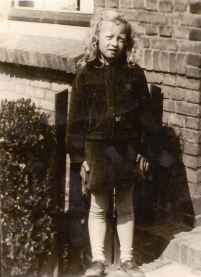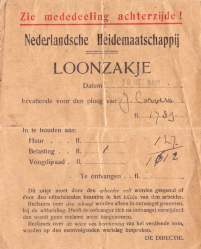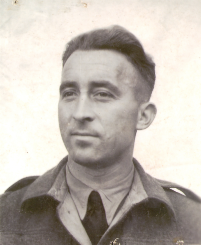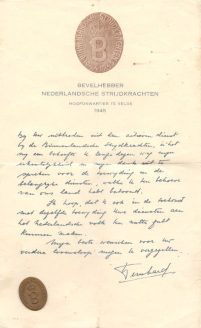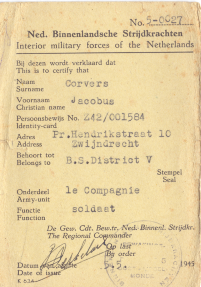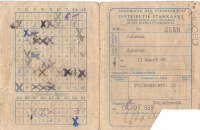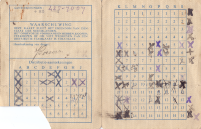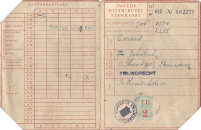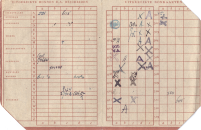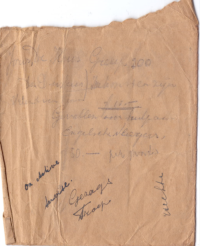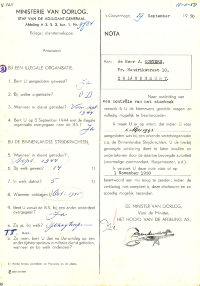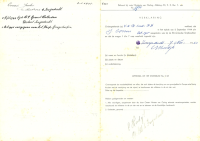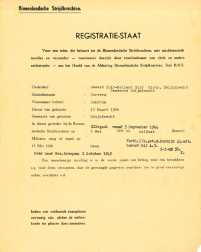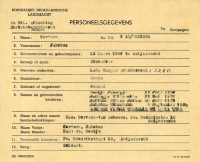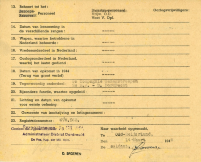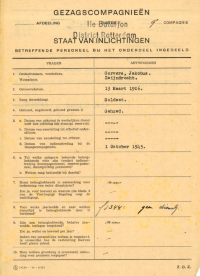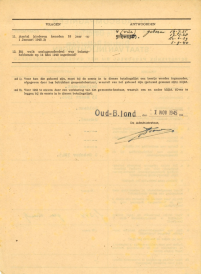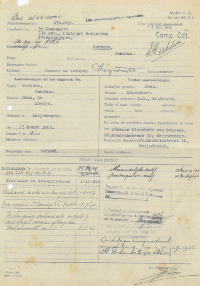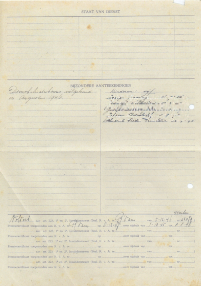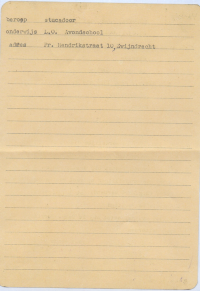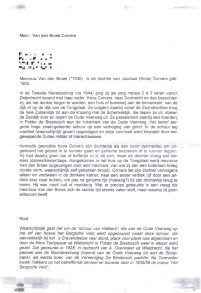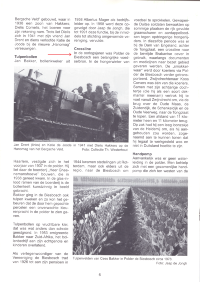The story of Z.J. Corvers - Zwijndrecht.
You can find here the personal memories of the grandmother of the author of this website.
Zoetje Corvers (maiden name), born in 1936, experienced the war very consciously. Her father Jacobus (Koos) Corvers presumably worked for the underground resistance and took Zoetje on several long walks to a farm on the Tongplaat. However, it was only after many years that these memories resurfaced. In 2005, when Zoetje's mother passed away, several things came to light. Among them were identification papers from the war, as well as several other documents and even a personal letter from His Royal Highness Prince Bernhard. This triggered numerous war memories for Zoetje, and it continued to bother her. It was the catalyst for a search for the facts. Let's start with the story.
In 1944, Zoetje was eight years old and had already lived half of her life in wartime. Since she lived in Zwijndrecht during the war, which was still a small village compared to today, and she was still young, she hadn't suffered much from the war. At least not in a way that had major consequences for her health and life. Everything was rationed, and there wasn't much, but life was bearable.
At some point during the war, she can remember, and this must have been around 1944, she had to undertake a long walk to Tongplaat with her father, Koos Corvers. It was a journey of 11 km there and another 11 km back. This was a tremendous distance for a girl of only 8 years old. On the Zwijndrechtse bridge, German soldiers were on guard duty, and sometimes she would receive a broken cookie from them. These cookies came from the Victoria biscuit factory. She also remembers that there were German soldiers at a house on the Oude Veerweg. They had machine guns and a searchlight. On the Tongplaat, there was a farmhouse, which was the destination of their walk. Along the way, they would pass a barn where food was stored. Here, an armed German soldier or a gendarme would be on guard duty.
Zoetje remembers that her father didn't have a bag with him, but she had a small bag herself. Once they arrived at the farmhouse, she would receive a sandwich, presumably from the farmer's wife, and her father would disappear through a door. He would return later after an unknown period of time. It was never made clear to Zoetje what exactly her father was doing. However, she does recall that her father always carried a pay packet from the Nederlandsche Heidemaatschappij. This pay packet was intended for workers employed as part of labor initiatives. Presumably, it was to make the Germans believe that he was legally employed and therefore didn't have to go to Germany for forced labor. Zoetje was likely used as a cover to avoid arousing suspicion among the Germans in the polder. Koos would always be gone for a significant amount of time, and he never talked about what he was doing until the day he passed away. Zoetje also remembers that Koos would sometimes come home with a knife wrapped in cloth, hidden in his coat. This coat would be concealed behind the toilet with the knife. Even Zoetje's mother knew nothing about her husband's activities. After the war, it was never discussed again, and gradually, it faded into oblivion.
Due to the limited available details and Zoetje's main memories of the long walk and the farmhouse, there is little information known about what Koos Corvers did when he was away. Around 1944-1945, there was a crossline near Tongplaat between the occupied area and the liberated Brabant region. It is suspected that Koos Corvers worked for the underground resistance in 1944 and actively participated in the crossings in the area. This suspicion is supported by the paperwork found regarding his service in the Binnenlandse Strijdkrachten (Dutch Resistance). From the found documents, we have been able to gather the following information about Koos Corvers. Additionally, we obtained additional digital documents from Jacobus Corvers via www.gahetna.nl, which provide insight into his employment before and after the war:
Koos Corvers enlisted in the OD (Orde Dienst) in September 1944. On September 5th, 1944, he transitioned to the B.S. (Binnenlandse Strijdkrachten), the Dutch Resistance forces. Koos served with the Binnenlandse Strijdkrachten in Gewest 14 - District 5 (Zwijndrecht) and held the rank of soldier. Since most resistance groups joined the Binnenlandse Strijdkrachten in September 1944 under the leadership of Prince Bernhard, and the documents indicate that Koos simultaneously joined the OD during this transition, it is unclear whether Koos was already involved in resistance activities before September 1944. In October 1945, he transitioned again to another organization, the Gezagstroepen (Authority Troops). From October 1st, 1945, he served in the 9th Company of the Gezagstroepen in Dordrecht. By then, the war was already over. The Gezagstroepen were an official unit within the Royal Dutch Army after the war, assuming the tasks of the Binnenlandse Strijdkrachten. According to the documents, his service with the Gezagstroepen ended on August 8th, 1946. Afterward, he went on extended leave and essentially became a reservist until he received his definitive military discharge in July 1952.
In addition to the above information that we found, several other interesting documents belonging to Koos have been discovered.
Such as a handwritten letter from H.R.H. Prince Bernhard, accompanied by a Binnenlandse Strijdkrachten commemorative medal. The letter reads:
"Upon your retirement from active service in the Binnenlandse Strijdkrachten, it is my desire to express my gratitude and thanks to you for the dedication and significant services you have rendered to our country. I hope that in the future, you will be able to continue serving the Dutch people with the same dedication. My best wishes for your future endeavors accompany you. Bernhard"
The letter is signed by Prince Bernhard, and many served in the Binnenlandse Strijdkrachten received the letter with the commemorative medal.
The images below are scans of documents that were found after the death of Zoetje Corvers' mother.
The images below are scans that we received through the archive of www.gahetna.nl. They are registration papers and the service record of Jacobus Corvers.
Finally, two images of Zoetje Corvers' story. She shared her story a few years ago for the Biesbosch newspaper, a publication by the Nature and Birdwatching Society in the Biesbosch. Zoetje occasionally attended films and lectures here with her husband. Attached is also a photo of her story in A4 format. ( In Dutch )
Finally:
The information we have is quite limited. We still don't know much about what Jacobus Corvers was involved in during the last two years of the war. Was he already working for the underground before 1944? On behalf of Zoetje, I would like to express how much we would appreciate more information about what Koos did during the war. Especially since it strongly appears that Zoetje, as an 8-year-old girl, was unknowingly involved in it.
We are desperately searching for any colleagues from the Dutch Resistance Forces or Order Police who might have worked with Koos Corvers and may know more. After reaching out to various archives where some paperwork was found, the trail went cold. It is highly likely that most BS (Binnenlandse Strijdkrachten) veterans who were still involved in resistance work or had connections to the crossings in the Biesbosch have passed away. Most of these resistance fighters would not have operated under their real names. However, perhaps someone recognizes Koos in the photo. Although the chances are very slim, we hope that someone can still provide us with information.
©2017-2025 :Https://www.Dordrechtindeoorlog.nl: ( There is a copyright on the content of this website. This content is not to be shared, duplicated or published withouth the explicit permission of the author of this website. If you have any requests you can email to: Info@Dordrechtindeoorlog.nl or look on : www.dordrechtindeoorlog.nl/termsofuseforthecontentonthiswebsite.
